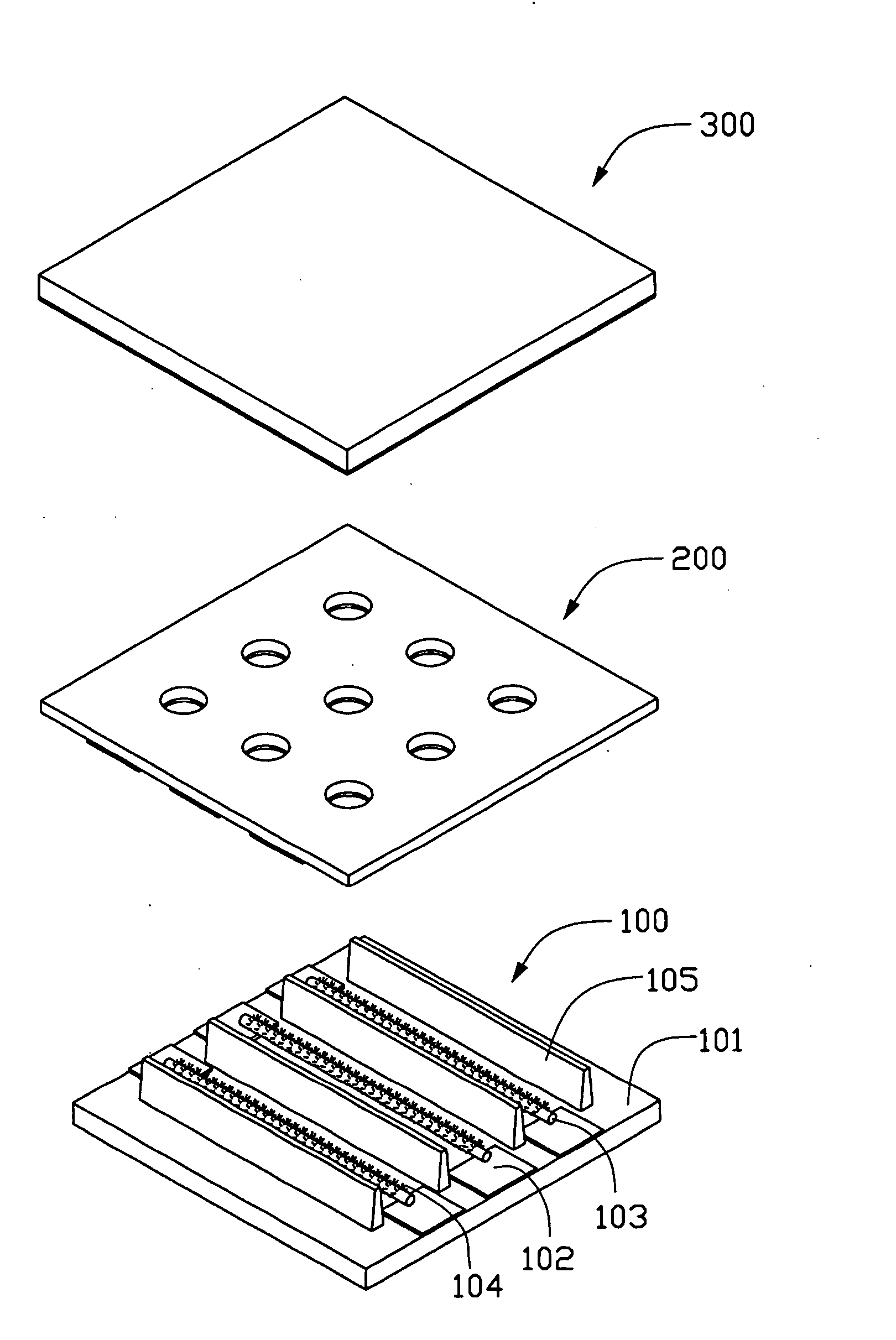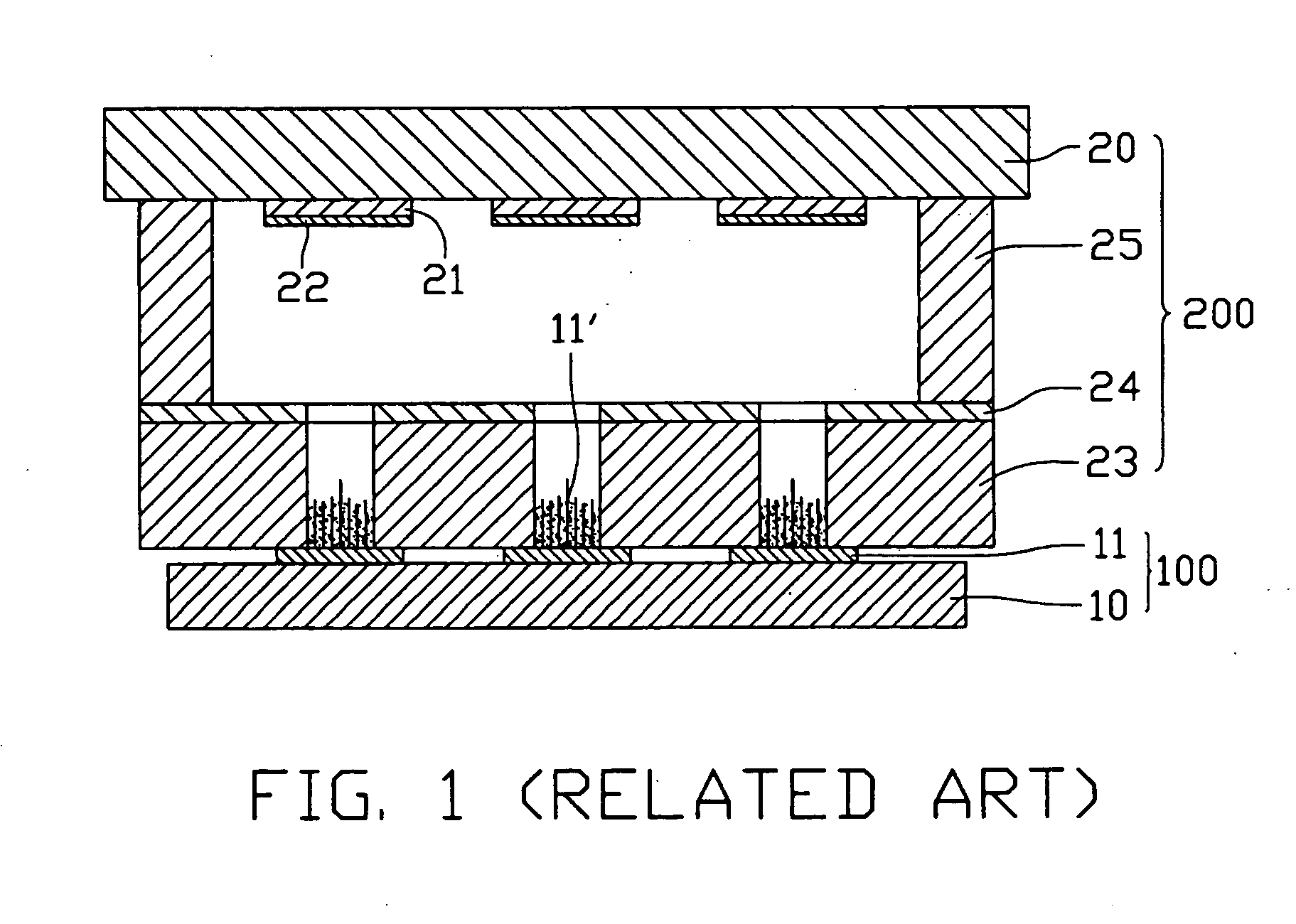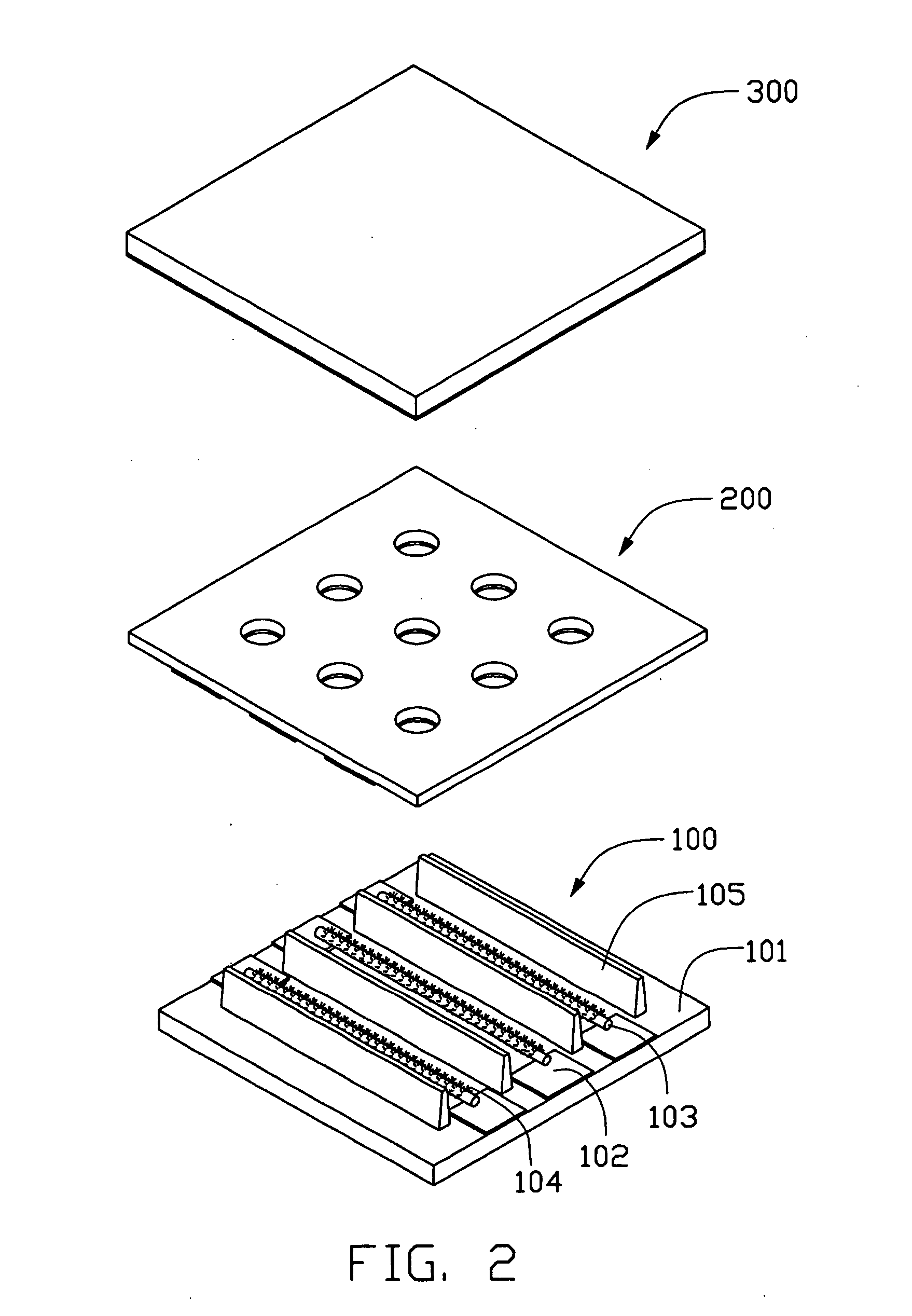Field emission device with carbon nanotubes
a carbon nanotube and emission device technology, applied in the field of field emission devices, can solve the problems of complex cnt field emission arrays, low voltage operation of field emission arrays, and shielding of applied electric fields, and achieve the effects of simple structure, less shielding, and easy production and assembly
- Summary
- Abstract
- Description
- Claims
- Application Information
AI Technical Summary
Benefits of technology
Problems solved by technology
Method used
Image
Examples
Embodiment Construction
[0022] Reference will now be made to the drawings to describe a preferred embodiment of the present invention in detail.
[0023] Referring now to the drawings, and more particularly to FIG. 2, a field emission device includes a CNT electron emitter source 100, a plate-like gate electrode member 200, and a plate-like anode electrode member 300. The gate electrode plate 200 is substantially disposed over the electron emitter source 100, and the anode electrode plate 300 is substantially disposed over the gate electrode plate 200. The electron emitter source 100 includes a dielectric glass substrate 101, a plurality of cathode connectors 102, a plurality of metal wires 103, a plurality of electron emitters 104, and a plurality of dielectric barriers 105. The cathode connectors 102 are distributed along two opposite sides of the dielectric glass substrate 101. The metal wires 103 are arranged parallel to each other. Each metal wire 103 spans between the opposite sides of the dielectric g...
PUM
 Login to View More
Login to View More Abstract
Description
Claims
Application Information
 Login to View More
Login to View More - R&D
- Intellectual Property
- Life Sciences
- Materials
- Tech Scout
- Unparalleled Data Quality
- Higher Quality Content
- 60% Fewer Hallucinations
Browse by: Latest US Patents, China's latest patents, Technical Efficacy Thesaurus, Application Domain, Technology Topic, Popular Technical Reports.
© 2025 PatSnap. All rights reserved.Legal|Privacy policy|Modern Slavery Act Transparency Statement|Sitemap|About US| Contact US: help@patsnap.com



